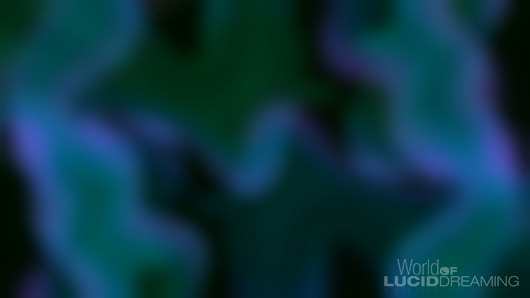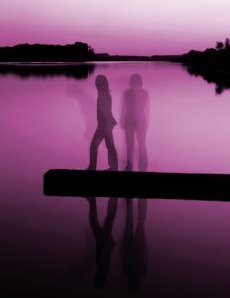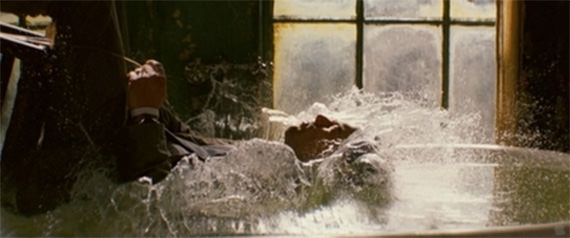Exploring Your Hypnagogia
What is hypnagogia? Learn how to induce the hypnagogic state to have lucid dreams and apparent out of body experiences.

Hypnagogia is the collective term for the hallucinations (sights, sounds and other sensations) we experience during the transition between wakefulness and sleep.
It occurs at the threshold of consciousness, and can be responsible for the onset of lucid dreams, hallucinations, out of body experiences and sleep paralysis.
You can deliberately induce hypnagogic hallucinations as you fall asleep in order to have a Wake Induced Lucid Dream or OBE. The best way is to meditate and listen to brainwave entrainment, allowing your mind and body to relax (as if falling asleep) but staying mentally aware.
What is Hypnagogia Like?
Like dreams, hypnagogic hallucinations can be quite surprising in nature. They are even responsible for apparent paranormal events like sleep paralysis, out of body experiences, alien abductions, night time visitations, and other ghostly encounters.

Here are some of the most common types of hypnagogic hallucinations you will probably have experienced yourself at some time:
Visual (Sights)
The beginnings of visual hallucinations occur as phosphenes - seemingly random speckles, lines or geometric patterns that may float around or remain still behind your closed eyelids.
When deeply immersed, you can control these patterns at will. To do this, just focus on changing the direction of the lines. Then mentally demand specific shapes and movements. After that it's not difficult to have the phosphenes form a familiar face or animal.

By learning to interact with your visual hypnagogia, you should find it easier to transition the visuals into whole imagined dream scenes which then become lucid dreams. See my tutorial on How to Have Lucid Dreams Using Hypnagogia.
Auditory (Sounds)
Occasionally you will experience auditory hallucinations during hypnagogia.
The intensity can vary greatly, from faint impressions to loud buzzing noises frequently reported at the onset of an OBE.
Auditory hypnagogia range from hearing someone call your name, to hearing the phone ring, or snippets of speech appearing to come from very nearby. I find this kind of hallucination is more transitory and I will only hear a brief few words or have a memory impression of hearing something just a moment ago.
Unlike the visual stuff, the sounds can't really be controlled (in my experience) simply because they're so fleeting. However it may be worth experimenting if you hear drawn out sounds such as music to see if it can be shaped consciously.
The Tetris Effect
This is a truly bizarre feature of hypnagogia, where you feel the sensation of acting out a repetitive activity from the day before. When I was younger I worked on a supermarket checkout. After a long shift, I had the frustrating sensation that I was scanning food items over and over in my hypnagogic state. Sometimes I even moved my arms like this in my semi-sleep state.
Similarly, waiters and waitresses report having "server dreams" where they restlessly wait tables as they fall asleep. Chess players claim to see the checkered black-and-white chess board over and over, while boaties have the sensation of rocking at sea when they go to bed on solid ground. Remember, though, this is not a dream state; the brain is replaying an abundance of sensory memories before your body finally shuts down and the real dreams begin.
Sleep Paralysis
Although unusual, both lucid dreamers and regular dreamers can experience sleep paralysis at any time on the verge of sleep.
This involves the sensation of being paralyzed (though really we are all paralyzed as we sleep at night to prevent us acting out our dreams). This natural bodily process is called REM atonia. In this instance, however, you become aware of the paralysis. The phenomenon usually passes in a few seconds or minutes as you return to full wakefulness or deepen the sensation and step your mind into a lucid dream.
Sleep paralysis can be accompanied by loud humming, roaring and buzzing noises (just like OBEs) and in severe cases includes visual hallucinations.
Other Sensations
The effects of hypnagogia don't end there. Some people report fleeting sensations of taste, smell, heat and other tactile feelings as they fall asleep.
It's also normal to have changes in perceived body size, or floating limbs. It's quite common as I fall asleep consciously or meditate to feel as though my arms are in a totally different positions to reality.
And we have all experienced the Hypnic Jerk: a sudden jolt back to reality from the verge of sleep and dreams, usually accompanied by a sensation and vision of suddenly tripping or falling (Inception called this The Kick).
There may also be a form of synesthesia at play during the hypnagogic state. Hearing a real-life sound may result in seeing a flash of white light due to some funny cross-wiring in the brain.
It's thought that we all have some degrees of synesthesia in waking life. While most of us may have a spacial recognition of the days of the week in our mind's eye, extreme synesthetes see numbers as colors, or taste foods when they hear certain words.
Why Observe My Hypnagogia?
If you're reading this page and wondering what the heck I'm on about, then you probably always fall asleep before the onset of your hypnagogia. This means you don't consciously observe it and so you won't have any memory of it at all.
Don't worry. Some nights, I go straight to sleep without giving it a second thought and I still have spontaneous lucid dreams later on the same night. However, it can be helpful to consciously and deliberately induce the hypnagogic state for two reasons:
- Meditation. Learning to meditate is a key part of lucid dreaming. It trains your brain to stay conscious and focused even when your body is deeply relaxed, and this is a great primer for lucidity. Besides developing your skills in altered states of awareness, it also helps you to visualize dream scenes from a waking state. If you currently have lucid dreams but don't meditate, you're missing out. You could supercharge the number of lucid dreams you have simply by meditating when you go to sleep at night and/or wake up in the early morning.
- Wake Induced Lucid Dreams and OBEs. One step beyond this is to induce a lucid dream from a meditative state. This is essentially what a Wake Induced Lucid Dream is - also known as an Out of Body Experience - although I'll leave the exact interpretation of events up to you. The WILD/OBE technique begins with the conscious observation of your hypnagogic imagery, and once you have mastered this calm observation of your own inner stream of consciousness, you will find it easier and easier to have WILDs and OBEs on demand.
How to Induce Conscious Hypnagogia
First, go to bed at your usual time and relax.
This will bring on the hypnagogic state, provided you don't fall asleep first. To ensure your brain stays consciously alert, try focusing your awareness as you breathe in, and then relaxing your body further as you breathe out. You body really must be relaxed, so actively relieve all tension by squeezing and then releasing all muscle groups.
If you feel the increasing urge to roll over - good!
This is your brain sending a signal to your body: are you asleep yet? Resist that urge and stay relaxed, and you should begin to experience some serious hypnagogia. Do not worry about sleep paralysis. Most of the time I don't feel it because my awareness is directed well away from my body. If you do feel the paralysis moving up your body, just go with it deeper, and start to visualize your next lucid dream. You are close to attaining full lucidity inside the dream world!
If you lay still for about 20-30 minutes and still can't see any blobs of color or twinkling lights, then your brain is probably too active and alert to sleep.
Try listening to brainwave entrainment to achieve more relaxed states of awareness which lead to the hypnagogic magic.
I experience visual and sensory effects every time I listen to brainwave audios and it can lead me into a deep meditation, which is an excellent primer for lucid dreaming.

















